It’s been called “the world’s most-filmed ghost story.” Yes, it’s The Turn of the Screw, an 1890s ghost story written by Henry James. Movie makers and TV producers just can’t seem to stop themselves from filming it, apparently. The long list of English-language productions in the IMDb ranges from a 1959 live telecast featuring multiple Oscar-winner Ingrid Bergman (unfortunately not available on disc or even tape), to a rather bizarre Michael Winner “prequel” called The Nightcomers (1971), starring the ultimate A-lister, Marlon Brando, as the villainous Peter Quint. The IMDb credits also include various foreign-language productions, as well as a whole ‘nother sub-category—movie and TV versions of the Benjamin Britten opera based on the same story.
The numerous productions of this Gothic tale of a haunted governess and her two charges on a remote country estate often vary in location, tone, and focus. Some have changed the time line from the 1860s of the original story to the 1890s, the 1920s, or even the 21st Century. At least one version has moved the geographical locale of sinister Bly House from the English countryside to another country (Spain). Some versions take the view that the governess is insane; some take the view that the ghosts are real; some leave it up in the air for viewers to decide for themselves.
However, the bones of the story are almost always the same: an unmarried vicar’s daughter (who has no name in the book) travels to London to interview for a post as a governess, after her father dies and leaves her penniless. The interview is with a wealthy, aristocratic bachelor, seeking a governess for his orphaned nephew and niece, Miles and Flora. The uncle is always a Babe Magnet, and the spinster is always instantly smitten with him.
The governess, who has no experience, takes the job and arrives at Bly, the uncle’s country estate, to find that her predecessor, Miss Jessel, recently committed suicide after an unhappy love affair with the abusive gardener, Peter Quint. (Quint is also dead, due to a fall on a cobbled road while in a drunken stupor.) The children behave very oddly and at times inappropriately for their ages, and the governess slowly becomes convinced that they are being possessed by the restless spirits of Miss Jessel and Quint. She enlists the reluctant aid of the kindly, simple housekeeper, Mrs. Grose, to free the children from these perverse hauntings. Mrs. Grose, however, swears she hasn’t seen any apparitions or witnessed any inappropriate behavior by the children. From there, the household descends into madness and finally, tragedy.
Some of the versions appear to have been lost, unfortunately, like the 1955 BBC television production, starring Geraldine Page (The Beguiled, 1971), and a 2003 version, starring long-time horror character actress Priscilla Alden as Mrs. Grose, which debuted in Pleasant Hill, California and then, apparently, disappeared without a trace. Here are the versions (not including foreign-language productions) that are relatively easy to obtain, along with The Verdict on whether or not the ghosts are real.
PS – For those who have long been puzzled by the meaning of the title, you can find it in the prologue to the novella. Guests at an English country house are gathered around a fire, telling ghost stories. One guest tells a story, and then a second guest speaks up: “Let’s give the screw another turn” – meaning, he wants to tell his own ghost story, which was related to him by his boyhood governess.
The Innocents (1961) — Directed by Jack Clayton (Room at the Top, 1959), starring Deborah Kerr, Michael Redgrave, Megs Jenkins, Pamela Franklin, Martin Stephens, Peter Wyngarde, and Clytie Jessop. Director Clayton, a triple Oscar nominee, assembled a kick-ass cast and crew for this film, considered far-and-away the best screen version of the novella. Aside from Kerr in what’s probably the best performance of her career, others who worked on this film include the Pulitzer Prize-winning author Truman Capote as script writer; the French ballet and symphony composer Georges Auric for the score; and double-Oscar winner, Freddie Francis (The Elephant Man, 1981) on the camera. According to one critic, it’s “the Rolls Royce of ghost stories.” The unsettling mood begins even before the credits, as the film opens with a pitch black screen while a child sings a mournful song off-camera (the song is repeated in the film, to great effect). There are creepy images and sounds a-plenty, as the apparitions of Quint (Peter Wyngarde) and Miss Jessel (Clytie Jessop) begin to appear, but the true horror is watching Kerr descend into flat-out, barking madness while trying to maintain her ladylike Victorian propriety. All of which is underscored brilliantly by the extraordinary B&W photography of Francis; the haunting score composed by Auric; the spot-on performances of the child actors and Megs Jenkins as the kindly, salt-of-the-earth housekeeper; and the sure direction of Clayton. The Verdict: it’s frustratingly ambiguous. Francis and Capote said yes, there are ghosts; Deborah Kerr said nay. Also, the viewer may note that the apparitions never appear outside of the governess’s point-of-view, as they do in other productions. 9/10. On disc and streaming.
The Turn of The Screw (1974) — Produced and directed by Dan Curtis (Dark Shadows, television version) from his own script; starring Lynn Redgrave, Megs Jenkins, John Barron, Eva Griffith and James Jacob. This is a surprisingly good made-for-TV movie, which was shot in England with a mostly British cast, headlined by Lynn Redgrave (daughter of Michael) as the governess. Horrormeister Curtis originally shot it on videotape like Dark Shadows, so it does have an unmistakable air of cheese. The acting, script and pacing are solid, though, and any hint of fromage is soon forgotten as the story kicks into high gear. Borrowing a lot from the style of Dark Shadows, with a score composed originally for the series, this version is by far the most Gothic. There are flickering candles, over-sized shadows, odd camera angles, secret casks of letters, and portentous musical cues galore. It can all get a bit tedious, but Curtis knows his horror, and inserts a good chill just when the numerous shots of Redgrave wandering in the darkness with a candle start to drag. Full marks to the child actors, Griffith as Flora and Jacob as Miles, with Jacob offering a somewhat different take on Miles (who’s been upgraded in the script to teenage status): more sexually knowledgeable, more obnoxious, and more sinister. Notably, Megs Jenkins repeats her role here as salt-of-the-earth Mrs. Grose. Also notably, the brief part of Miss Jessel is played by Kathryn Leigh Scott, who portrayed Maggie Evans on Dark Shadows. The Verdict: the ghosts are real; Dan Curtis doesn’t do subtle. PS — Curtis loved the story so much that he wrote a whole multi-episode story arc with the same plot for Dark Shadows. 7/10. On disc and streaming.
The Turn of the Screw (1989) — a stand-alone TV episode directed by Graeme Clifford (Gleaming the Cube, 1989) for HBO; starring Amy Irving (Crossing Delancy, 1988) as the governess, and prolific British actor David Hemmings (The League of Extraordinary Gentlemen, 2003) as Uncle Babe Magnet. It was aired on HBO as an episode of a short-lived anthology series called Nightmare Classics, and then quickly forgotten. This version supplies a few good chills, but is otherwise a fairly plodding effort. Irving isn’t particularly suited to the lead role; she’s decidedly anachronistic as a self-assured, ambitious “career woman,” which is partially the fault of the script. The role of the uncle has been expanded, probably to justify the salary for Hemmings, and the part of kindly Mrs. Grose (Micole Mercurio, What Lies Beneath, 2001) has been sadly truncated to make room for him. And he’s a very, very bad uncle indeed, so much so that the whole plot has been subverted and changed radically, creating an entirely different story altogether. The deaths of Quint and Miss Jessel are no longer shrouded in mystery, but explained in graphic detail, and their spirits have excellent reasons for seeking revenge on the residents of Bly House. The action has been cut down to fit into the hour-long format, so there’s no slow build-up of growing suspense and terror, as is the case in The Innocents and other higher-quality versions. It’s worth watching mainly for collectors and/or fans of Henry James. Adding David Hemmings to the cast, however, was a nice touch; he began his career in the arts as a juvenile opera singer, and he sang the part of Miles in the 1959 British telecast of the Benjamin Britten opera based on the novella. The Verdict: the ghosts are real, a point which is driven home with a sledgehammer several times throughout the production. 5/10. Only available on VHS, through third-party or auction sites.
The Turn of the Screw (1992), — Directed by Rusty Lemorande; starring Patsy Kensit, Julian Sands, Marianne Faithful, and Stephane Audran, This is an undeservedly obscure Anglo-French production directed by Rusty Lemorande, who made a name for himself in the 80s as a music video director (Captain EO). A very young and beautiful Kensit plays the governess, here called “Miss Jenny,” and she does an excellent job in a demanding role. Updating the tale for the MTV generation, Lemorande stuffs his film with startling images, enigmatic musical cues, and quick-cut editing techniques. This version also moves the storyline forward more than a century, first into the early Nineties and, then, in a flashback, to the swinging mid-Sixties. It opens with a woman only known as The Narrator (Sixties pop icon Marianne Faithful), sharing confidences in a group therapy session. From there, we go to the familiar scene of the wealthy bachelor uncle (Sands) interviewing the naive ingénue for the governess job in his Mod, Carnaby-Street-era pad in London. Sands, who unfortunately camps it up in a flouncy Austin Powers shirt, is thankfully not onscreen for very long. The movie switches from the camp tone to something much darker when it moves to Bly House in the countryside – which is now a brooding Victorian hulk, stuffed with antique mechanical toys, creepy taxidermy, and fey stained-glass windows. The very British Mrs. Grose has given way to Madame Grose, a charming Frenchwoman (played very winningly by the French actress, Audran), who has a fondness for tweed skirts and twin-sets. The children are very good and, unlike in most productions, are the correct ages, as revealed in the book: eight and 10. The sexual subtext is a lot more blatant here and the apparitions of Quint and Miss Jessel are more than just scary; they’re hot, particularly Oliver Debray as the blonde Quint, who displays an impressively ripped torso peeking through a flouncy shirt. The final confrontation between Miles and the governess is particularly scary and emotionally draining. The Verdict: no ghosts; the governess is insane, according to The Narrator herself, whose true identity is revealed in a final “twist” at the end. Not released on official DVD; a used/vintage VHS copy can be purchased from online third-party sellers in the US and UK. As with The Haunting of Helen Walker (below), it’s a shame this version hasn’t received an official DVD release. 8/10
The Haunting of Helen Walker, aka The Turn of the Screw (1995) – a made-for-television movie directed by Tom McLoughlin; starring Valerie Bertinelli, Diana Rigg, Aled Roberts, Florence Hoath and Christopher Guard. Broadcast in 1995 by CBS, this version doesn’t seem very promising at first glance, mainly because the lead role is played by Bertinelli (Hot In Cleveland), TV’s long-standing Princess of Perk. Fortunately, the role of the governess has been adjusted to accommodate Bertinelli’s American accent and limited acting range, and she does quite well with it. It opens with a slow pan of the Bly estate: the grand house, the beautiful gardens in full bloom, the stately ornamental pond. The camera then homes in on the pond, eventually coming to rest on Miss Jessel’s creepy, floating corpse, half-obscured by reeds and flowing black hair. From there, we switch to the now-familiar interview scene with Uncle Babe Magnet, where we learn that Bertinelli is Mrs. Walker, the thirtyish American widow of a much-older English schoolmaster, in need of financial support. At Bly, she meets Mrs. Grose, played by Diana Rigg (The Avengers). Rigg, who manages to look elegant even while playing a sixtyish Victorian housekeeper, is a very different sort of Mrs. Grose than Megs Jenkins. She’s still sympathetic, but better-educated and self-confident; a much more formidable partner/adversary for the governess. As the apparitions make their appearances, we see one of the scariest incarnations of Quint yet; he’s seductive, otherworldly, and horribly repellent, all at the same time. Meanwhile, Aled Roberts does a good job as Miles, almost as good with the part as Martin Stephens from The Innocents, and Florence Hoath essays the part of Flora solidly enough. McLoughlin directs at a good pace and the climactic confrontation between Mrs. Walker and Miles is suspenseful and emotionally affecting. This version offers some surprisingly effective chills; it’s a good choice for whiling away a rainy afternoon. The Verdict: the ghosts are real. There’s a VHS version made for the British market under the title The Turn of the Screw; otherwise, a pretty good copy can be found on YouTube. It’s a shame this version is not available in an official DVD release. 7/10
Presence of Mind (1999) — Directed by Antonio Aloi, starring Sadie Frost, Harvey Keitel, Lauren Bacall, Ella Jones and Nilo Zimmerman. This Spanish production, filmed in English, gives the venerable ghost tale an “art film” treatment; like many so-called art films, it’s pretentious and s-l-o-w. It had a good enough pedigree at release to be reviewed by Variety (which hated it), then apparently sank into obscurity. The director seems to be aiming for an allegorical spin to the tale, if you go by the odd casting choices and seemingly pointless character changes. It starts off well enough, with Bly now a palm-kissed, ancient pile of stucco on the lush island of Mallorca. Frost, as the governess, looks very fetching in a velvet snood and hoop skirt. Uncle Babe Magnet is played by cult film favorite Harvey Keitel (Reservoir Dogs, Pulp Fiction), who lives in London and dresses like a 17th Century Spanish grandee. No explanation is given for his eccentric haberdashery, nor for his thuddingly thick Brooklyn accent, but since the overall tone is grand Shakespearian tragedy rather than authenticity, perhaps director Aloi felt those details were unimportant. (The child actors playing Flora and Miles, Ella Jones and Nilo Zimmerman, both speak with upper-class English accents.) When Frost arrives at Bly, she meets the estate’s sinister and intimidating housekeeper, Mado Remeii, played by Lauren Bacall (The Mirror Has Two Faces, 1996); gone is the usual warm-hearted Mrs. Grose as essayed by Megs Jenkins and other actresses. There are a few brief creepy scenes, but on the whole, the script is a mess, featuring slow, barely audible dialog that wanders off onto pretentious tangents. Hampered perhaps by the dreadful script, Frost isn’t up to the emotionally demanding role; with her thin, chipmunk voice and limited facial expressions, she’s simply incapable of dominating the role as better actresses have. The establishing photography can be lovely at times, but the interior scenes of this Spanish Bly suffer greatly from poor lighting, making it difficult for the viewer to follow the action. The attempt to create a Shakespearian tragedy out of one of the world’s most popular ghost stories may have been a good idea in the hands of a different director, but it certainly wasn’t a good idea with this one, and especially with such a weak acting presence in the lead role. There’s a blink-and-you-miss-it cameo of Jude Law, pre-breakout, and the two child actors are generally good. But it’s a disappointing effort overall. The Verdict: the ghosts probably aren’t real, but the viewer, relieved to finally reach the light at the end of all those long dark tunnels (literally!), simply doesn’t care. On disc and streaming. 4/10
The Turn of the Screw (1999), — Directed by Ben Bolt (Doc Martin, British television series), starring Johdi May, Colin Firth, Pam Ferris, Joe Sowerbutts, and Grace Robinson. An American production released by PBS, but filmed in England with an all-British cast, this version is by far the most faithful, on this list, to the James novella. Much of the dialogue is taken directly from the book, and Quint, who is usually portrayed as a kind of dark, demonic clone of Heathcliffe from Wuthering Heights, is depicted exactly as he is in the original source material: a pale-faced, wild-eyed ginger. The increasingly unhinged governess is played well by a young Jodhi May (Game of Thrones) and, as in the novella, she has no name, but is simply known to her orphan charges as “Miss.” May turns in a fairly decent odyssey into madness; it’s not on the level of Deborah Kerr’s epic melt-down in The Innocents, but it’s good in its own right. Firth (The King’s Speech, 2010) does a brief appearance as Uncle Babe Magnet, while Ferris (Call the Midwife, British television series) turns in a very credible Mrs. Grose, a flintier and even less-educated Mrs. Grose than that portrayed by the beloved Megs Jenkins. It’s all very competently filmed and acted, but a bit skimpy when it comes to delivering the requisite chills and thrills. Worth watching if you want to see the version that would most likely please Mr. James. The Verdict: whether the ghosts exist or not is ambiguous, just as in the book it so faithfully portrays. On disc and streaming. 7/10
In a Dark Place (2006), — Directed by Donato Rotunno, starring Leelee Sobieski, Tara McCarthy, Christian Olsen, and Gabrielle Adam. I wanted to like this little-known Anglo-Belgian production, but alas, I must admit that it’s one terrible film. Weighed down by uninspired direction, leaden performances, glacial pacing, a dreadful script, and dull camerawork, it’s almost like the Bizzarro World version of The Innocents. The film starts promisingly enough, with the lead played by the normally solid Leelee Sobieski (Eyes Wide Shut, 1999). Now called Anna, she’s an American expat employed as a London school teacher; she botches the job, and soon gets the sack. All is not lost, however—the lecherous old headmaster offers to recommend her for a plum post as a governess at a luxurious country estate, in exchange for a wretched bout of sex. The requisite interview with the uncle takes place in a corporate glass tower; he’s a hard-charging Master of the Universe, who speaks to Sobieski for approximately 30 seconds. From there, she’s handed over to Ms. Grose (Tara Fitzgerald, Requiem BBC series), a coldly efficient executive assistant who gives off a distinctly hostile vibe. Sobieski and Fitzgerald make the usual trek to remote Bly House together—however, it’s a very different Bly from the one usually portrayed. It’s no longer early summer, but the dead of winter, and the verdant gardens are covered in a bleak blanket of snow. In time, we meet the latest incarnations of Miles and Flora (Christian Olsen and Gabrielle Adam). There is little character development for either of them; they start out bratty and neurotic, and just get brattier and more neurotic as the story unfolds. The apparitions of Quint and Jessel are brief and not particularly disturbing, and, as in Presence of Mind, morphing the character of Mrs. Grose from sympathetic to sinister kills much of the compelling tension of the original novella. Further changes include a sadly ham-fisted attempt to “update” the plot with a lesbian angle involving Ms. Grose and the departed Miss Jessel. Finally, the climactic confrontation between Miles and the governess has been changed dramatically, and it makes for a mean-spirited and just plain icky conclusion. The Verdict: the ghosts are all in Sobieski’s mind, but no one cares, because the story is a mess and all the characters are blatantly unlikeable. On disc and streaming. 3.5/10
The Turn Of The Screw (2009) – Directed by Tim Fywell (Cambridge Spies, British miniseries), starring Michele Dockery, Dan Stevens, Sue Johnston, Josef Lyndsay, Eva Sayer and Corin Redgrave. This flashy BBC TV production is notable for starring three future cast members of the Downtown Abbey universe: Dockery (as the governess), Stevens, and Johnston as Mrs. Grose. The time frame has been moved forward from the hoop-skirted, mid-Victorian era to the roaring Twenties. The story opens ingeniously, with Dockery as a mute, traumatized patient in a mental asylum, apparently just a short time after the tragic, final confrontation with Miles at Bly. Stevens is fairly solid as a sympathetic young psychiatrist who listens to her story in flashback. Slick, good-looking and well-acted for the most part, this production suffers, unfortunately, from attempts to copy many current horror tropes: a lot of weird noises and unnecessary jump cuts; the sexual content is turned up to eleven, and there are many instances where otherwise mundane events are presented as frightening or disturbing. For example, when the governess first meets Miles, he steps suddenly out of a sinister fog to an ominous, clashing musical cue, but nothing happens afterward, thus creating a frustrating build-up to a non-existent payoff. Used to excess, these pointless embellishments unfortunately give the production an obvious manipulative flavor. Dockery’s performance is interesting but not wholly successful; she plays the governess in a sort of semi-catatonic trance, even before the trip to the mental asylum. (Her interpretation is a startling contrast to the brittle, foolish cheerfulness of Deborah Kerr’s Miss Giddens.) The children, Josef Lyndsay and Eva Sayer, are good but nothing special, and there’s a nice touch adding the late Corin Redgrave to the cast as an older doctor at the asylum, thereby marking the third time a Redgrave has undertaken the Henry James classic. Despite its significant flaws, this version moves along with enough verve to keep most viewers interested, until it suggests, rather ridiculously, that the wayward ghosts of Bly have decided to haunt other characters besides the governess. The verdict: the ghosts are real, and Dan Stevens is their next victim. On disc and streaming. 6/10
 Horror News | HNN Official Site | Horror Movies,Trailers, Reviews
Horror News | HNN Official Site | Horror Movies,Trailers, Reviews


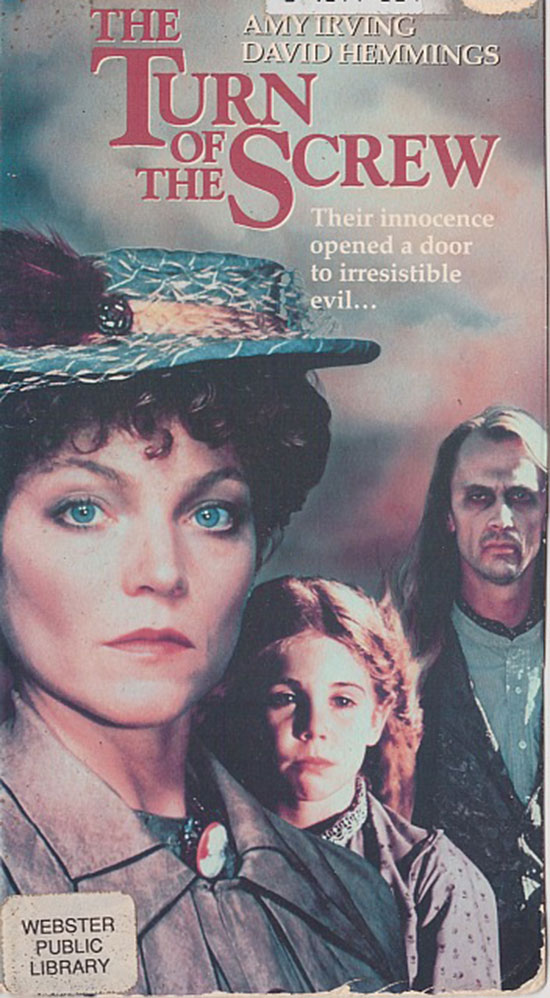
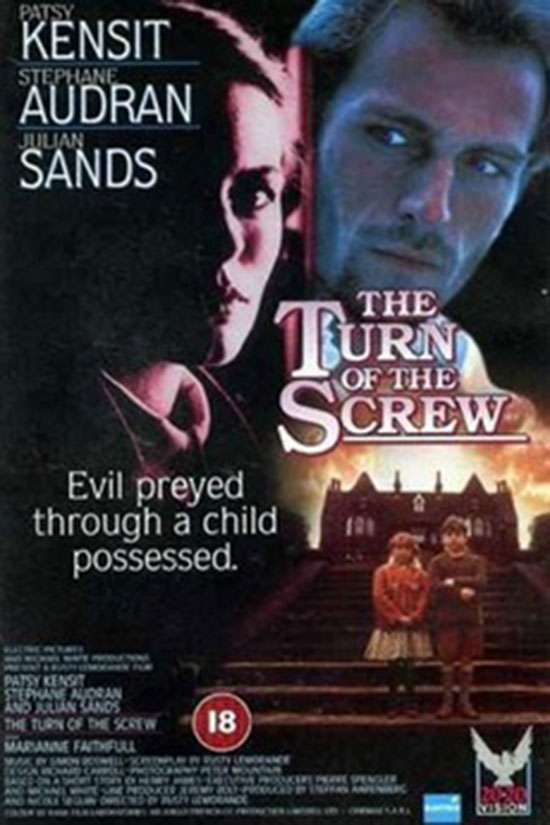
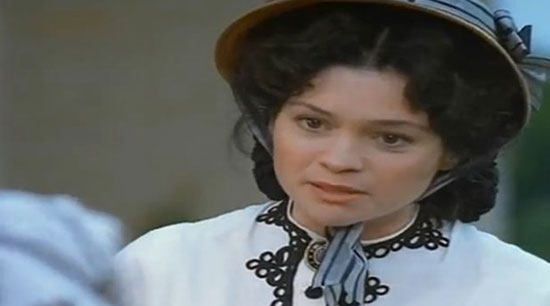

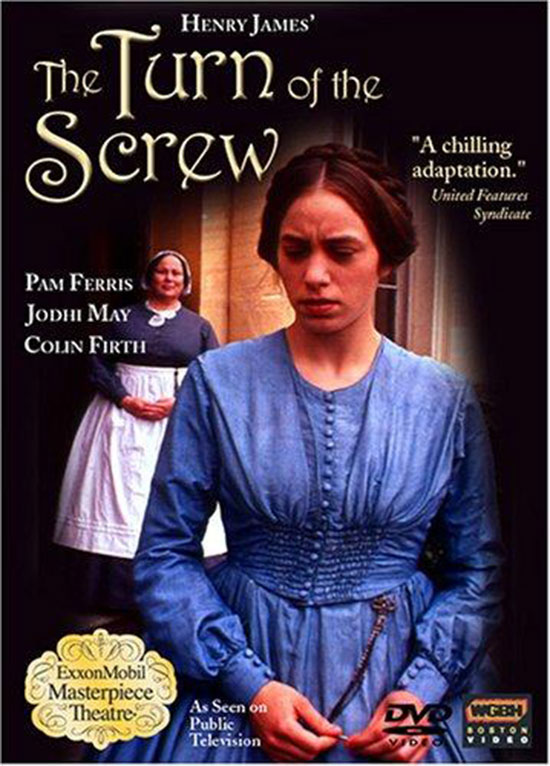
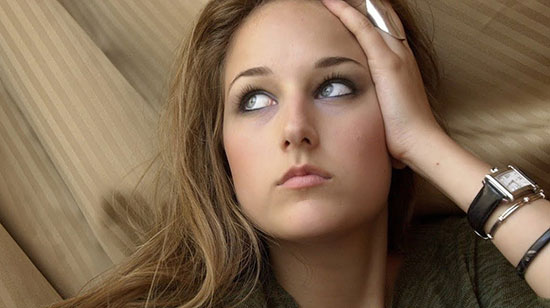

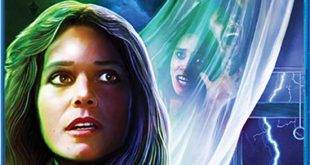

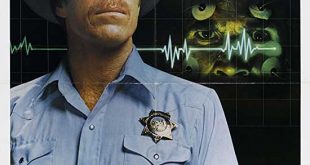

Hmm. . . why does this article have tags about Chuck Norris and Ron Silver?
I also should have noted in my article that the screw is scheduled to be turned one more time, in an upcoming 2019 film called “The Turning” which is listed as being EP’d by Steven Spielberg.
You can add a 2020 New Zealand film, in which a present day actor (Greer Phillips) is called to a late night final rehearsal for the play of the novella, to stand in as the Governess – her big chance. Fortunately (?) she knows they play well, and rehearsal, play and actual story merge, and there is a final turn of the screw that took me by surprise.